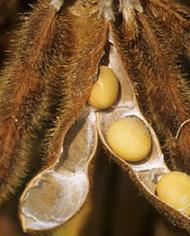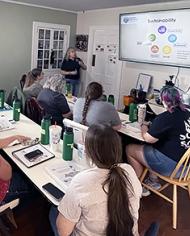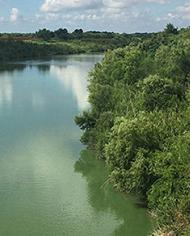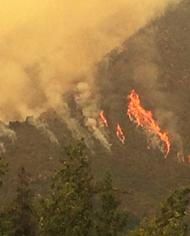Healthy rangelands are essential for ensuring grazing and forage productivity, reducing wind erosion and wildfire risks, and supporting wildlife ecosystems.
Tellus Articles
ARS researchers are studying the great potential of the multifaceted grain Kernza
ARS scientists develop monitoring system to support farmers in their effort to protect the Chesapeake Bay
Aquaponic systems may help sweetpotato industry and feed ‘urban deserts.’
ARS researchers in Boise, ID, are studying prescribed fires in western juniper type landscapes to better understand how this land management tool affects the hydrology, habitat, and overall ecosystem of this land type.
ARS researchers are studying the potential benefits of reversing soil erosion on hilly lands
Scientists are working with biochar materials to replace petroleum in products like tires.
Disposable Consumer Products May Sprout Antimicrobial Resistance
More greenhouse gas comes from water than land.
Scientists are investigating how farmer can maximize profitability with limited water.
ARS scientists are innovating fruit packaging to drastically extend shelf life and reduce food waste.
Scientists work to define how agriculture affects greenhouse gasses and more
ARS project begins to refill water source beneath Mississippi Delta.
When selecting UV absorbers, go natural.
Researchers use long-term data to assess organic practices.
Production and demand-oriented research work in concert to boost profits
Study shows that the old rule of thumb may not apply to all situations.
Researchers use cutting-edge imaging to pre-screen fruit for the marketplace.
ARS technology helps cotton industry eliminate plastic contamination.
Growing switchgrass in non-irrigated pivot corners may help make farmers’ ends meet
Isochoric freezing is offering the promise of longer-lasting, higher-quality food products.
ARS researchers tap into the fungi’s potential to ease many farm-to-fork maladies
Researcher develops technique to turn dairy waste products into bioplastic.
This year marks the Agricultural Research Service's 70th anniversary.
The ARS Three Sisters Project plants the seeds of agricultural science careers.
ARS researchers help students understand the world around them.
BlueSTEM, Oklahoma schools are partnering with ARS to cultivate curiosity
See how ARS researchers are using insects to reduce the presence of Arundo, a fast-growing invasive grass.
A site in the middle of Missouri provides critical agricultural research on the national scale.
ARS researchers are downscaling climate data to improve modeling techniques.
A new workshop unites practice with research on the beneficial effects of fire.
New uses for leftover agricultural products promise more revenue and less waste.
Before you know it, you might be fueling your car from a tree or bale of hay.
Advanced research and technology could squeeze every drop from feedstocks.
Small herbivores consider restoration seedlings a delicacy.
Alligator weed works its way into Northern California. ARS researchers are seeking biocontrol agents.
ARS researchers are finding new, more sustainable uses for ethanol byproducts.
New online tool helps California farmers reduce the risks of climate change.
ARS scientists explain how farmers can use nitrogen while both saving money and protecting the planet.
Researchers turn organic waste into products that protect people and the planet.
Dr. Pugh made major advances in understanding the role of the bacterium that can cause pinkeye in cattle.
Science may boost the cotton nonwoven industry and clean the environment.
ARS is pioneering a way to move water through a technology known as Managed Aquifer Recharge.
ARS researchers use tiny particles to create huge antimicrobial capabilities.
ARS scientists identified a source of contamination in Kewaunee County, WI, groundwater.
ARS researchers are creating single-use containers that are biodegradable.
ARS scientists are employing manure to help dairy farmers tackle climate change.
The Earth BioGenome Project aims to sequence, catalog, and characterize the genomes of all known organisms.
Remote sensing is quickly becoming a major tool for ranchers for adaptive management.




















































